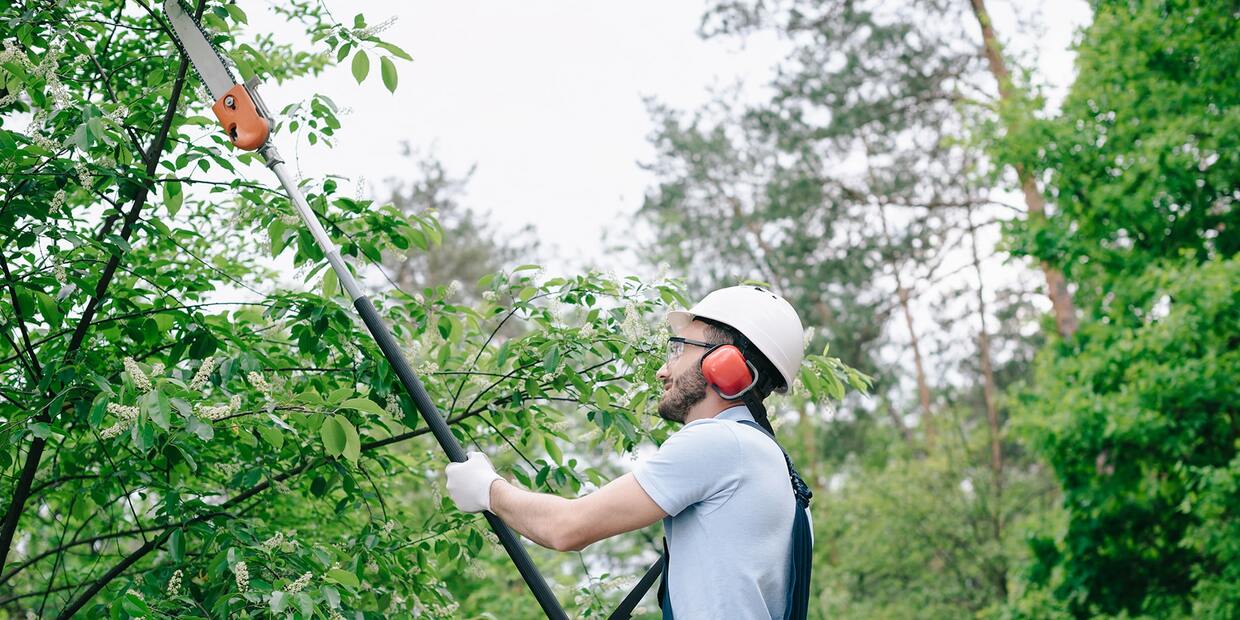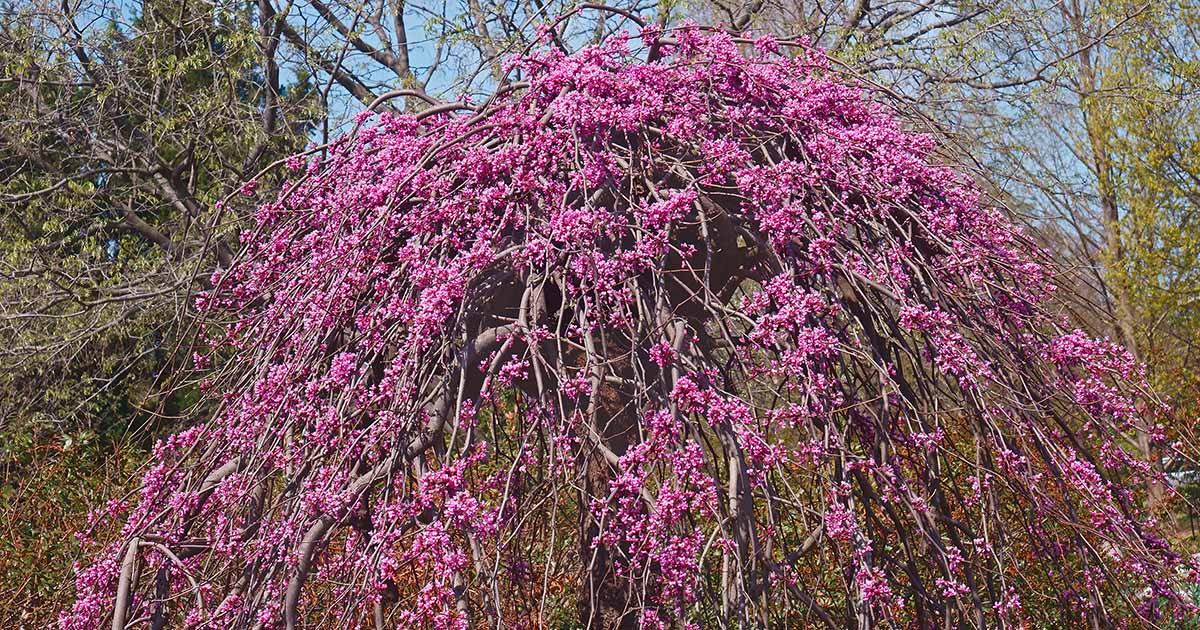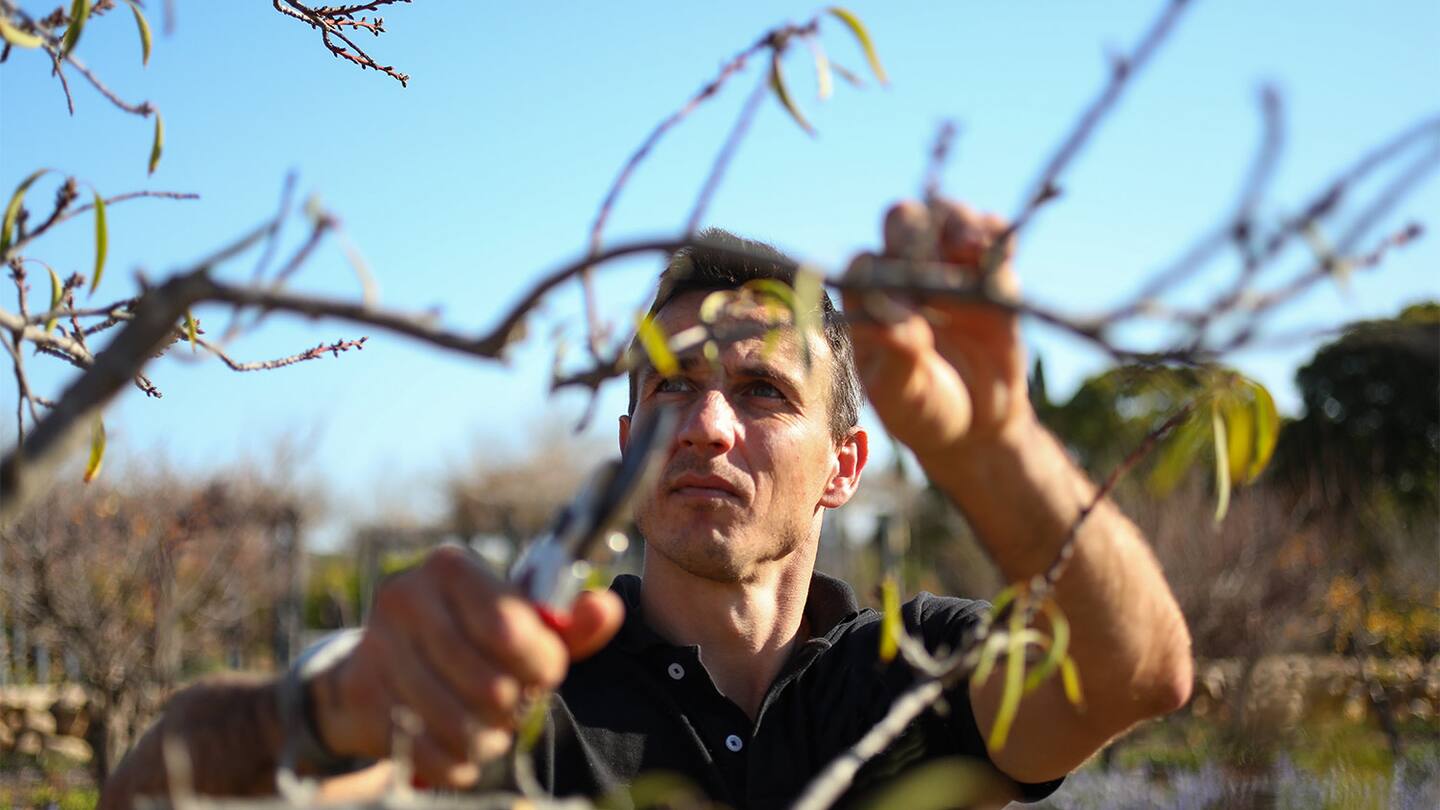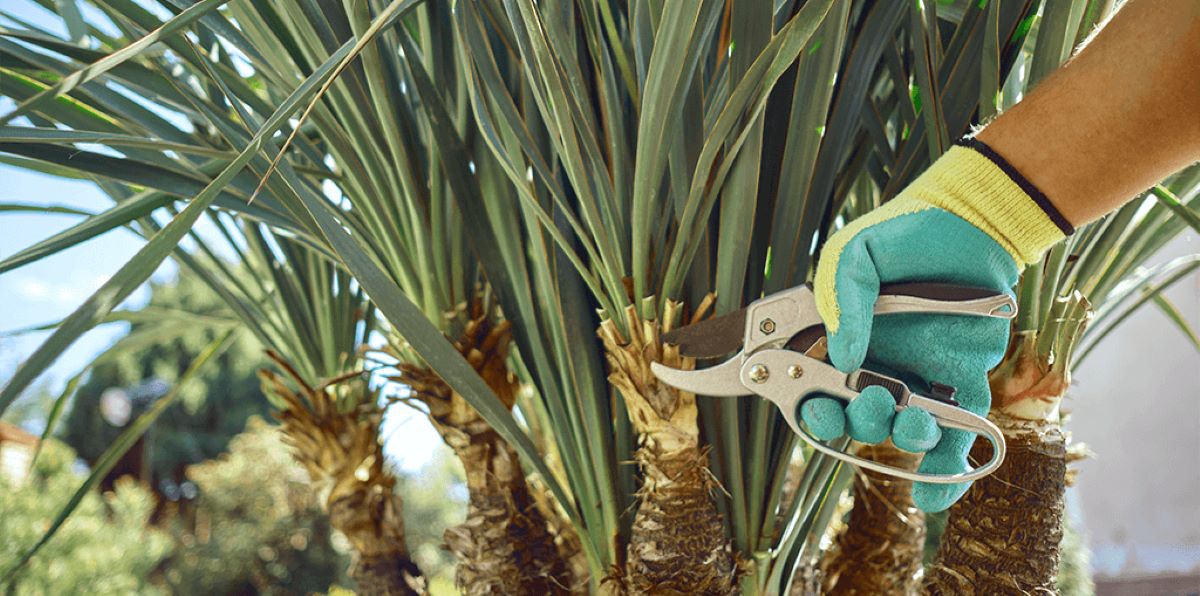Home>Gardening Techniques>Plant Care>How To Trim Olive Trees
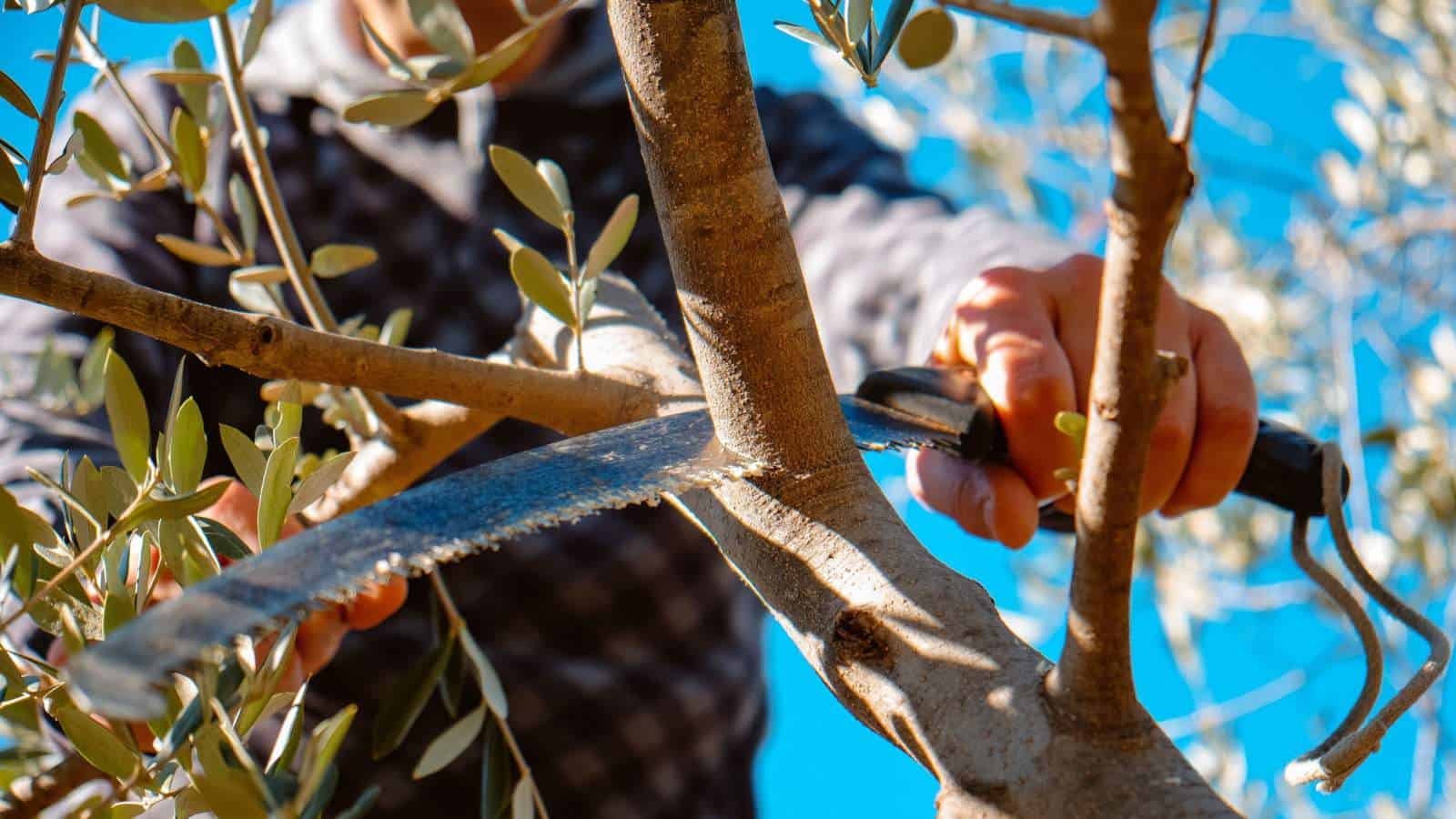

Plant Care
How To Trim Olive Trees
Modified: January 22, 2024
Learn the best techniques for trimming olive trees and ensuring optimal plant care. Find step-by-step instructions and expert tips for maintaining healthy, thriving olive trees.
(Many of the links in this article redirect to a specific reviewed product. Your purchase of these products through affiliate links helps to generate commission for Chicagolandgardening.com, at no extra cost. Learn more)
Table of Contents
Introduction
Welcome to our comprehensive guide on how to trim olive trees. Whether you’re a seasoned gardener or a novice plant enthusiast, taking care of your olive trees is crucial for their health and productivity. Pruning is an essential aspect of plant care that helps promote growth, shape the tree, and maximize fruit production.
Olive trees have been cultivated for thousands of years and are primarily known for their delicious fruit and the production of high-quality olive oil. These iconic trees not only provide culinary delights but also add beauty and elegance to any landscape. But to ensure their longevity and optimal performance, regular pruning is key.
Trimming olive trees is a delicate art, requiring a combination of knowledge, skill, and patience. In this guide, we will walk you through the process, step-by-step, providing you with all the necessary information and tips to ensure you can confidently trim your olive trees.
Properly trimming olive trees offers a myriad of benefits. First and foremost, it helps maintain the tree’s shape and structure, preventing it from becoming overly dense or unruly. Pruning also facilitates better air circulation and sunlight penetration, reducing the risk of pests and diseases. Additionally, it stimulates new growth and promotes an abundant and healthy harvest.
Throughout this article, we’ll cover the best time to trim olive trees, the tools and equipment you’ll need, and provide a detailed step-by-step guide to ensure you are equipped with the knowledge to properly trim your trees. We’ll also share helpful pruning tips and techniques, as well as common mistakes to avoid.
So let’s get started on this rewarding journey of mastering the art of trimming olive trees! By the end of this guide, you’ll have the confidence and expertise to maintain the health and beauty of your olive trees, and enjoy the bountiful harvest they have to offer.
Understanding Olive Trees
Before diving into the specifics of trimming olive trees, it’s important to have a basic understanding of these remarkable plants. Olive trees (Olea europaea) are native to the Mediterranean region and have been cultivated for thousands of years. They are known for their endurance and adaptability to various climates and soil types.
One of the distinguishing features of olive trees is their evergreen nature. This means they retain their leaves year-round, providing a beautiful green backdrop in your garden. The leaves are small, oblong, and gray-green in color, which helps them conserve moisture in dry conditions.
When it comes to size, olive trees can vary widely depending on the variety and growing conditions. Some trees can stay relatively small, reaching heights of around 10 to 15 feet, while others can grow much taller, exceeding 30 feet. It’s important to consider the potential size of the tree when planning your pruning and maintenance strategies.
Olives themselves are drupes, similar to cherries or plums, and are typically harvested when they reach a certain level of maturity. While the fruiting season for olives can vary depending on the region, it usually occurs in late summer or early fall. Pruning can help ensure that your olive tree produces a bountiful crop by removing dead or diseased branches and optimizing sunlight exposure.
Additionally, it’s worth noting that olive trees have a remarkable ability to regenerate even after severe pruning or damage. This makes them highly resilient and forgiving for those new to the art of pruning. However, it’s still essential to follow proper pruning techniques to minimize the risk of stress or damage to the tree.
Understanding the growth habits and characteristics of olive trees will provide valuable insight into their needs and help you make informed decisions when it comes to trimming and caring for them. Now that you have a better understanding of these incredible trees, let’s explore the best time to trim olive trees to ensure optimal results.
When to Trim Olive Trees
Timing is crucial when it comes to pruning olive trees. Trimming at the right time ensures that the tree remains healthy, promotes proper growth, and encourages abundant fruit production. Generally, olive trees are typically pruned during the late winter or early spring months when they are in their dormant phase.
The main reason to prune during this period is to avoid interfering with the tree’s fruiting cycle. Pruning after the fruiting season, typically in late fall or early winter, removes the potential fruit-bearing branches, which can significantly impact the next year’s harvest. Pruning during the dormant phase also allows the tree to recover and heal properly before the growing season begins.
It’s important to note that the exact timing of pruning can vary depending on your location and the climate. The key is to prune before the tree starts to break bud and initiate new growth. A good rule of thumb is to prune a few weeks before the last expected frost in your area. This timing ensures that the tree has ample time to recover and minimizes the risk of frost damage to newly pruned branches.
If you live in a region with mild winters and minimal frost, you can also consider pruning in early spring before the tree starts to actively grow. However, it’s essential to monitor the tree closely and adjust the pruning schedule accordingly to prevent interference with fruiting.
It’s worth mentioning that some light pruning or corrective trimming may be done throughout the year to remove dead or diseased branches or address any immediate issues. However, major pruning should be reserved for the dormant season to ensure the best results.
By trimming your olive trees at the right time, you’ll promote healthy growth, maintain the tree’s shape, and maximize fruit production. Now that we’ve covered the best time to trim olive trees, let’s move on to the tools and equipment you’ll need for the job.
Tools and Equipment Needed
When it comes to trimming olive trees, having the right tools and equipment will make the task much easier and more efficient. Here is a list of essential tools and equipment you’ll need for pruning your olive trees:
- Pruning Shears: Also known as hand pruners or secateurs, pruning shears are essential for trimming small branches and twigs. Look for a pair with sharp blades and a comfortable grip to minimize hand fatigue.
- Lopping Shears: These larger pruning shears are designed to tackle thicker branches. Lopping shears provide greater leverage and cutting power, making them ideal for removing larger branches that are out of reach of hand pruners.
- Pole Pruner: A pole pruner is a long-handled pruning tool with a cutting head at the end. It allows you to reach higher branches without the need for a ladder, reducing the risk of accidents. Make sure to choose a pole pruner with a sharp blade and a sturdy extendable pole.
- Pruning Saw: For larger branches that are too thick for lopping shears or pole pruners, a pruning saw is essential. Look for a saw with a sharp, curved blade that can easily cut through thick wood.
- Gloves: It’s important to protect your hands while pruning. Choose a pair of gloves that provide both comfort and dexterity. Opt for gloves made of sturdy material and with a good grip to ensure your safety.
- Safety Gear: Safety should always be a top priority when pruning trees. Consider wearing safety glasses or goggles to protect your eyes from debris, and a sturdy hat to shield your head from falling branches.
- Ladder: Depending on the height and size of your olive tree, you may need a ladder to reach higher branches. Ensure the ladder is stable and secure before climbing.
- Disinfectant: To prevent the spread of diseases, it’s important to disinfect your pruning tools between cuts. Use a mixture of water and household bleach or a specialized pruning tool disinfectant to clean your tools.
Having these essential tools and equipment will make your olive tree pruning experience much smoother and safer. Before you start pruning, ensure that all your tools are in good working condition and properly cleaned and sharpened. Taking the time to gather the right tools and equipment will help you achieve the best results and maintain the health and beauty of your olive trees.
Step-by-Step Guide to Trimming Olive Trees
Trimming olive trees can seem daunting, but with the right approach, it can be an enjoyable and rewarding experience. Follow these step-by-step instructions to trim your olive trees effectively:
- Inspect the Tree: Begin by carefully examining your olive tree. Look for any dead, damaged, or diseased branches that need to be removed. Also, consider the overall shape and structure of the tree and identify any areas that require thinning or shaping.
- Start with Dead Branches: Using pruning shears or lopping shears, begin by removing any dead branches. Cut them off at the base, as close to the main trunk as possible. This helps promote the health of the tree and prevents the spread of diseases.
- Remove Suckers and Water Sprouts: Look for any suckers or water sprouts that are growing from the base or along the trunk of the tree. These are fast-growing shoots that usually do not bear fruit and can detract from the tree’s overall health and appearance. Use pruning shears to carefully remove them.
- Thin Out Crowded Branches: Olive trees can become dense, resulting in poor air circulation and limited sunlight penetration. Identify any branches that are crossing or rubbing against each other and thin them out. Choose the weaker or less desirable branches for removal, leaving the healthier ones to thrive.
- Prune for Shape: To maintain the shape of your olive tree, selectively prune any branches that are growing out of proportion or disrupting the desired form. Take small, deliberate cuts to maintain the tree’s natural appearance. Step back regularly to assess the shape and make adjustments as needed.
- Trim Higher Branches: If you need to reach higher branches, use a pole pruner or a ladder along with pruning shears or lopping shears. Take caution when working at heights and ensure your safety at all times. Remove any excess growth or branches that are growing too close to structures or overhead wires.
- Prune for Fruit Production: If your primary goal is to maximize fruit production, focus on thinning out interior branches to allow more sunlight to reach the center of the tree. This promotes better fruit development and ripening. Aim for an open, vase-like shape that allows for optimal air circulation.
- Step Back and Assess: Once you’ve completed the pruning process, step back and assess the overall appearance of your olive tree. Make any final adjustments to ensure a balanced and aesthetically pleasing shape.
Remember, it’s essential to take your time and approach pruning with care and precision. Avoid removing more than 25% of the tree’s foliage in a single pruning session to prevent stress and potential damage. Regularly maintaining your olive trees through proper pruning will help them thrive and provide you with a bountiful harvest for years to come.
Pruning Tips and Techniques
Pruning olive trees is not just about cutting branches; it requires some finesse and understanding of the tree’s growth habits. Here are some essential tips and techniques to keep in mind while trimming your olive trees:
- Prune for Balance: Aim to maintain a balanced and symmetrical shape when trimming your olive trees. This ensures proper weight distribution and prevents the tree from becoming lopsided or top-heavy.
- Follow the Natural Form: Olive trees have a natural tendency to grow in an open, vase-like shape. Preserve this form while pruning, as it allows for better air circulation and sunlight penetration.
- Mind the Central Leader: The central leader is the main vertical trunk of the tree. Keep it intact and encourage upward growth by avoiding heavy pruning at the top. This helps maintain the overall structure and vigor of the tree.
- Use Clean and Sharp Tools: Make sure your pruning tools are clean and sharp before starting. Blunt or dirty tools can damage the tree and introduce diseases. Regularly clean and disinfect your tools to prevent the spread of pathogens.
- Prune Strategically: Focus on removing dead, damaged, or diseased branches first. Then prioritize thinning out crowded areas and shaping the tree for better structure and aesthetics.
- Take Small, Clean Cuts: When pruning, make small and clean cuts just above a bud or lateral branch junction. Avoid leaving stubs, as they are prone to disease and slow healing.
- Step Back and Observe: Take breaks during the pruning process to step back and assess the tree’s shape. Regularly evaluate the balance and overall appearance to make adjustments as needed.
- Be Mindful of Over-Pruning: While pruning is important, it’s crucial not to over-prune your olive trees. Removing too many branches can stress the tree and affect its ability to produce fruit.
- Seek Professional Advice: If you are unsure about how to prune your olive trees or if they require significant corrective pruning, consider consulting a professional arborist or experienced gardener for guidance.
By following these tips and techniques, you’ll be able to effectively prune your olive trees, promoting their health, productivity, and overall beauty. Remember to be patient, take your time, and enjoy the process of caring for your olive trees.
Common Mistakes to Avoid
While pruning olive trees can be a rewarding experience, it’s important to be aware of common mistakes that can hinder the health and growth of your trees. By avoiding these errors, you’ll ensure the best possible outcome for your olive tree trimming efforts:
- Over-Pruning: One of the most common mistakes is removing too many branches at once. Over-pruning can stress the tree and affect its ability to produce fruit. Be mindful of the 25% rule and avoid excessive pruning in a single session.
- Pruning at the Wrong Time: Timing is crucial when it comes to pruning olive trees. Pruning during the wrong season, such as when the tree is actively growing or bearing fruit, can negatively impact its health and productivity. Stick to the dormant period, typically late winter or early spring, for major pruning.
- Using Dull or Dirty Tools: Using dull or dirty pruning tools can lead to rough cuts and can introduce diseases to your tree. Ensure your tools are clean and sharp before starting, and regularly clean and disinfect them to maintain their effectiveness.
- Leaving Stub Cuts: Leaving stub cuts behind can create an entry point for diseases and pests. Make clean cuts just above a bud or lateral branch junction to promote proper healing and growth.
- Pruning Too Much near Harvest: Pruning too close to the fruiting season can interfere with fruit production and reduce the next year’s harvest. Avoid heavy pruning in the months leading up to the expected harvest time.
- Ignoring Tree Structure: Neglecting the overall structure of your olive trees can lead to imbalanced growth and weak branches. Aim for a balanced and symmetrical shape by selectively pruning to maintain an open vase-like form.
- Not Seeking Professional Advice when Needed: If you are unsure about pruning techniques or need guidance on corrective pruning, it’s best to consult a professional arborist or experienced gardener. They can provide expert advice tailored to your specific olive tree needs.
- Being Impatient: Pruning takes time and patience. Rushing through the process can result in haphazard cuts and potentially harm the tree. Take your time, step back, and assess the tree’s progress regularly.
Avoiding these common mistakes will set you on the path to successful olive tree pruning. With proper care and attention, your olive trees will thrive and provide you with years of beauty and delicious fruit.
Aftercare and Maintenance
After trimming your olive trees, it’s important to provide proper aftercare and ongoing maintenance to ensure their continued health and well-being. Here are some essential steps to follow:
- Watering: Olive trees have moderate water needs, especially during the growing season. Provide regular deep watering, ensuring the soil is evenly moist but not waterlogged. Avoid overwatering, as this can lead to root rot and other issues.
- Fertilizing: Olive trees generally do not require heavy fertilization. However, adding a balanced slow-release fertilizer in early spring can provide the tree with essential nutrients. Follow the manufacturer’s instructions for application rates.
- Mulching: Applying a layer of organic mulch, such as wood chips or compost, around the base of the tree can help conserve moisture, suppress weed growth, and improve soil health. Keep the mulch a few inches away from the trunk to prevent moisture buildup and potential rot.
- Pest and Disease Control: Regularly inspect your olive trees for signs of pests or diseases. Common olive tree pests include aphids, scale insects, and olive fruit flies. If an infestation is detected, treat it promptly with appropriate organic or chemical controls. Consult a professional if needed.
- Monitoring Tree Health: Keep a close eye on your olive trees throughout the year. Look for any signs of stress, including wilting leaves, yellowing foliage, or unusual growth patterns. Address any issues promptly to prevent them from spreading or becoming more severe.
- Pruning Maintenance: After the initial pruning, ongoing maintenance pruning may be necessary to remove any new dead or diseased branches, thin out crowded areas, or shape the tree as needed. Regularly assess the tree’s growth and structure, and perform minor pruning tasks as required.
- Harvesting Olives: Pay attention to the fruiting season and harvest your olives when they are fully ripe. Follow proper harvesting techniques to ensure the best flavor and quality. Store harvested olives in a cool, dry place or proceed with olive oil production if desired.
- Continuous Learning: Stay curious and seek out further knowledge about olive tree care. Attend workshops, read books, or connect with local gardening communities to expand your understanding and improve your olive tree maintenance skills.
By providing proper aftercare and maintenance, you’ll help your olive trees thrive and continue to beautify your landscape while producing a bountiful harvest. Remember to observe your trees regularly, be proactive in addressing any issues, and enjoy the fulfilling journey of caring for these remarkable plants.
Conclusion
Trimming olive trees is a vital aspect of their care and maintenance, and with the proper knowledge and techniques, you can ensure their health, beauty, and productivity. By understanding the growth habits of olive trees, knowing when to trim them, and using the right tools and equipment, you can effectively prune and shape your trees to their full potential.
Throughout this guide, we’ve covered the essential steps and considerations for trimming olive trees. From inspecting the tree and removing dead branches to thinning out crowded areas and shaping for balance, each step plays a crucial role in maintaining the health and appearance of the tree.
We also discussed the common mistakes to avoid, such as over-pruning, neglecting tree structure, and using dull tools. By being mindful of these mistakes, you can ensure that your pruning efforts have a positive impact on the overall health and productivity of your olive trees.
After pruning, remember to provide proper aftercare and ongoing maintenance, including watering, fertilizing, monitoring for pests and diseases, and performing necessary maintenance pruning. Regular observation and care will help your olive trees thrive, providing you with years of enjoyment and a bountiful harvest.
Pruning olive trees is not just a task, but an art that requires patience, skill, and a deep understanding of the trees themselves. As you embark on this journey of caring for your olive trees, continue learning, seeking advice when needed, and embracing the rewarding experience of watching your trees grow and flourish.
So go ahead, grab your pruning shears, and confidently embark on the journey of trimming your olive trees. By applying what you’ve learned in this guide, you’ll be equipped with the knowledge and skills to maintain the health, shape, and beauty of your olive trees for years to come.
